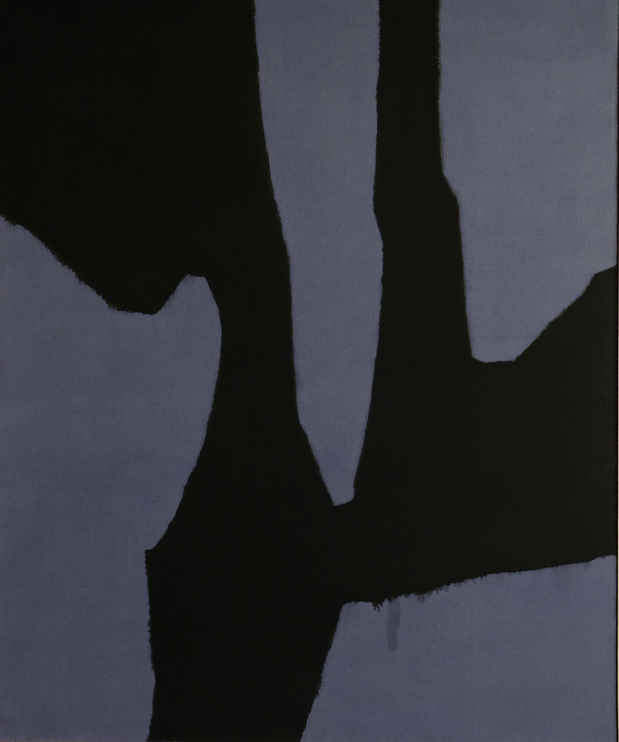Charles Pollock “Black to Color”
Jason McCoy, Inc. (Midtown)

[Image: Charles Pollock "Rome Fourteen" (1963) Oil on canvas, 67 x 55 1/8 in.]
This event has ended.
Jason McCoy Gallery presents Charles Pollock: Black to Color, featuring a selection of paintings from the 1960s. Drawing from three series of the artist’s oeuvre, Black and Gray, Rome, and the New York series NY, this selected group of large-scale paintings aims to document Charles Pollock’s transition from relatively monochrome abstractions to explorations related to Color-Field painting.
Completed in Michigan in the early 1960s, the Black and Gray series is characterized by large, irregular shapes stemming from torn paper collages, sharply contrasted with monochromatic backgrounds. Set against subdued variations of gray, these forms appear both rooted and amorphous; though black, their edges seem unrestricted. Charles Pollock’s subsequent Rome series introduces subtle explorations of color. Named after their place of origin, where the artist took a sabbatical year from teaching in 1962-63, these paintings embrace dark silhouettes that establish a haunting effect, allowing for a more direct relationship between the viewer and the painting. By the late 1960s, Pollock was focusing exclusively on color. In his NY series, which marked Charles Pollock’s return to New York City after an absence of thirty-three years, biomorphic shapes have been replaced with vertical quasi-geometric structures. These totemic forms evoke color stacks, which are sometimes slanted diagonally. Emanating a strong transcendental quality, these ethereal constructs seem to be floating in space, at once emergent from and receding into the surrounding atmosphere.
Born in 1902 in Denver, Colorado, Charles Pollock was the eldest of five boys (Marvin Jay, Frank Leslie, Sanford LeRoy and Paul Jackson). He spent his childhood in the American West before his interest in the work of Max Weber, Orozco, Rivera and Thomas Hart Benton took him to New York in 1926. There, he studied with Benton at the Art Students League and soon became his assistant and friend. From 1942 to 1967, he taught calligraphy, graphic design and printmaking at Michigan State University. He retired in 1967, and received both a Guggenheim Grant and a National Foundation of Arts Grant that year. He moved back to New York where he began a new body of work in his studio on the Bowery. In 1971 he moved to Paris, where he had an atelier on the rue du Cherche-Midi. Charles Pollock died in Paris in 1988 at the age of 85.
Media
Schedule
from October 07, 2015 to November 13, 2015
Opening Reception on 2015-10-07 from 17:00 to 19:00